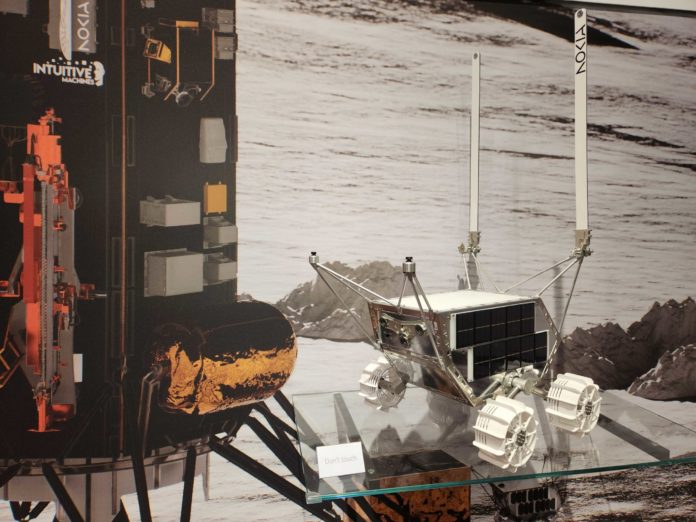A moon rover + base station will launch later this year
Amid rising interest in what non-terrestrial networks might mean for communications on Earth, Nokia Bell Labs is taking space-based networks a step further, and collaborating on a NASA project to put LTE on the moon in support of a lunar rover.
The idea is to explore the moon’s southern pole with a rover that can connect to an LTE base station built into a lunar lander about four meters tall. The rover, featured in Nokia’s booth at Mobile World Congress Barcelona, will be able to capture high-definition pictures and videos via an LTE link in 1.8 GHz spectrum, explained Luis Maestro, the principal investigator for the project within Nokia Bell Labs. That information will go through processing on-site and then be sent back to earth.
Nokia has said that part of its goal is to establish the viability of cellular tech for future space exploration by adapting commercial tech to do the job. Nokia received NASA funding through its Tipping Point project aimed at sustainable development of tech for space missions, including manned missions.
“For the future of space exploration, communications is a critical capability,” said Maestro at MWC23. “Instead of building proprietary solutions or reinventing the wheel, why not leverage technologies that we know from Earth … are good, that they are robust, they are reliable? We know how to build them and operate them.”
Nokia Bell Labs is working with two space start-ups on the project. Its ultra-company base station is mounted on the Nova-C lander from aerospace company Intuitive Machines, coupled with MIMO antennas on Lunar Outpost’s MAPP (Mobile Autonomous Prospecting Platform) rover.
The engineering challenges of putting a cellular network into space are daunting, Maestro explains, and the the cellular equipment had to undergo significant design changes in order to survive space and deliver coverage. Equipment has to be built to minimize its size, weight and power consumption, while being able to survive the intense vibration of launch and the extreme temperatures of space, from its aspects as a frigid vacuum to the blistering heat and radiation of direct sunlight. Special radiating elements have to be integrated that dissipate heat because the mechanisms for heat dissipation that typically work on Earth often rely on air flow, which doesn’t happen in space. Because the moon is so much smaller than the earth, its curvature becomes a limiting factor in the range over which the LTE link can be maintained. The rover has to be wary of the terrain—including shadows cast by large rocks, which could block its solar panels and kill its power supply—so a navigational route has to be painstakingly planned, and that can potentially take the rover out of the line of the strongest RF coverage.
Launch of the lunar lander base station and the rover are expected to come late this year, Maestro said.
What are some of the lessons that a lunar network could bring back to earth? New approaches to cooling and ultra-reliability in harsh environments, Maestro says, as well as new techniques for operating under very limited-power scenarios. In addition, he points out, the network has to be able to be deploy itself autonomously, with zero physical human intervention—which adds an intriguing aspect of what the R&D might ultimately mean for both, say, disaster recovery cellular deployables or cell sites in general.
For more information, check out Nokia Bell Labs’ blog posts about the project here and here.

